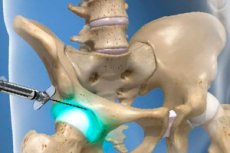New publications
Intra-articular steroid injections and possible risks
Last reviewed: 02.07.2025

All iLive content is medically reviewed or fact checked to ensure as much factual accuracy as possible.
We have strict sourcing guidelines and only link to reputable media sites, academic research institutions and, whenever possible, medically peer reviewed studies. Note that the numbers in parentheses ([1], [2], etc.) are clickable links to these studies.
If you feel that any of our content is inaccurate, out-of-date, or otherwise questionable, please select it and press Ctrl + Enter.

Injecting corticosteroids into the hip joint significantly increases the risk of developing progressive osteoarthritis, according to a dismal finding by researchers from the College of Public Health and Harvard University.
Intra-articular corticosteroid injections are a fairly popular global technique that is widely used in the treatment of inflammatory processes and pain syndromes in people suffering from osteoarthritis of the hip joint. However, if corticosteroids are administered repeatedly or if high dosages of drugs are used, the risk of developing rapid degenerative joint changes increases. This was stated by Dr. of Medical Sciences Kanu Okike, summing up the results of the study.
The experiment involved two completely different scientific approaches: experts had to assess the probable link between the development of osteoarthritis and the introduction of corticosteroid drugs into the joint.
The first stage of the study involved comparing information on 40 patients with confirmed post-injection hip degeneration, as well as more than 700 patients who underwent total hip replacement for various reasons.
After analyzing the data, it was found that corticosteroid injections into the joints increased the risk of developing rapid degenerative complications by more than 8 times. In addition, the study demonstrated the dependence of the reaction on the dose of the administered drug. Thus, the risks were 5 times higher in patients who received low doses of steroids, and 10 times higher in patients who were administered high doses of drugs. The risks also increased depending on the number of injections made.
The second stage of the research work involved analyzing information on almost 700 patients who had undergone intra-articular glucocorticosteroid treatment. More than 5% of them developed post-injection osteoarthritis: this occurred approximately five months after the treatment. All patients were referred for total hip replacement surgery.
The above conclusions allow us to think about the possible danger that the popular injection method carries. Orthopedic and surgical doctors need to be extremely careful in their prescriptions and cautious when administering intra-articular injections of 80 mg or more of corticosteroids into the hip joint. Multiple injections should be avoided if possible.
Source of materials – Journal of bone and joint surgery JB JS
